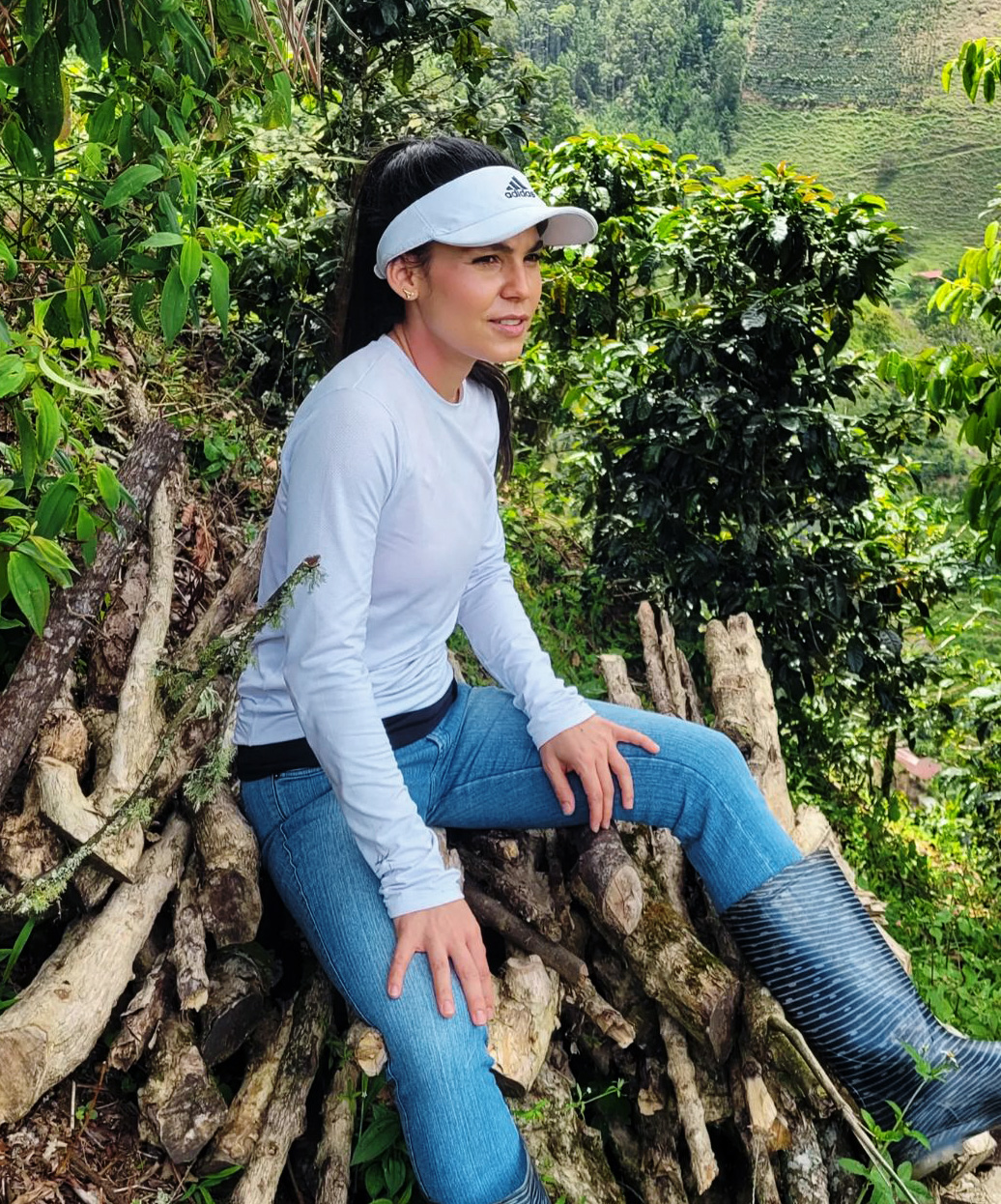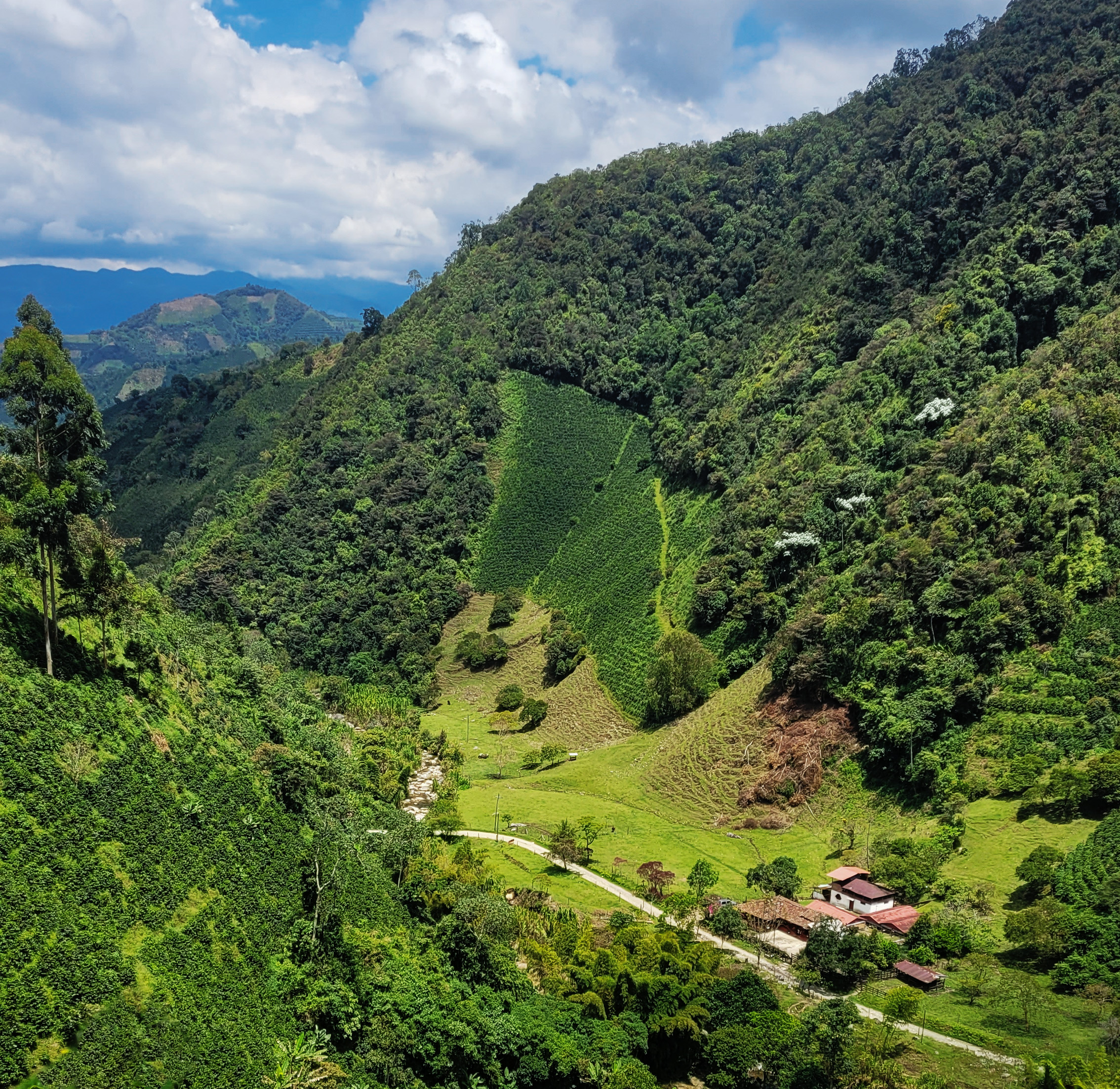To learn more about what coffee production looks like on a typical Colombian coffee farm, we spoke with Carolina Ramírez, the owner of San Antonio de la Piedra, a mid-sized coffee farm in Antioquia. Carolina’s family has been producing coffee in Antioquia for more than 100 years. Concerned about the violence in rural Colombia, Carolina’s family sent her away to Medellín to study at the age of 16. At first, she became a lawyer, but three years ago she decided to return to the farm and continue her family’s legacy.
 Carolina Ramírez taking a moment to relax on the farm.
Carolina Ramírez taking a moment to relax on the farm.
At San Antonio de la Piedra they plant 12 hectares with coffee, at a density of 6,000 trees per hectare. Trees shade the coffee and protect the soil where the coffee grows. They use a small amount of their land to cultivate fruits and vegetables for the family. On the remainder of their land — 60% of the total — they preserve the natural forest.
 Densely planted coffee trees on the steep slopes of San Antonio de la Piedra
Densely planted coffee trees on the steep slopes of San Antonio de la Piedra
Carolina takes great pride in their efforts to reduce the environmental impact of the farm. They avoid the use of herbicides, she says, relying on machetes and scythes to control weeds and pulling up climbers by hand. They pulp their cherries without water and use septic tanks and lagoons to treat the wastewater that results from processing.
For Carolina, as for many farmers in Colombia, the biggest challenge in producing coffee is finding enough workers. ‘There are fewer and fewer young people who want to work in the fields,’ she says. While coffee prices have risen recently, so have production costs: inputs such as fertilisers have more than doubled in price. This makes it hard for them to attract workers by paying more, and many farmworkers now prefer to seek work in the city, she says.
They are also feeling the effects of climate change,